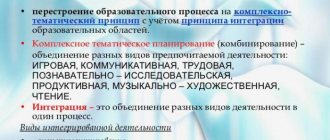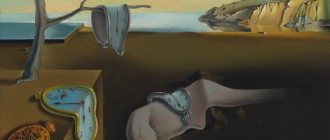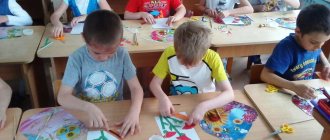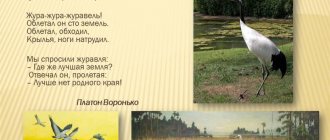Thematic planning of educational activities in an early age group
Shunina Natalya
Thematic planning of educational activities in an early age group
First junior group
Educational areas Types and forms of joint educational activities
September
Adaptation 1-3 weeks
Topic “Toys” (week 4)
Introduce children to the general concept of “toys”
, to develop knowledge about the properties, qualities and functional purpose of toys, to encourage kindness, care, and careful attitude towards toys in children, and to develop communication skills.
Social and communicative development Role-playing games: “A new doll gets acquainted with the play corner”
(remind children of the names of objects located in play corners,
“A truck is carrying furniture to a new house” (to develop children’s ability to play together)
Theatrical games: “Visiting the dolls”
(develop a sense of color, evoke an emotional response to a play situation,
“Construction” (involve children in role-playing interaction, develop play skills)
Conversations: “Don’t put toys in your mouth”
,
“Putting toys to bed”
, (to develop children’s ability to interact with each other and with the teacher, to develop work
activity )
Didactic games: “Getting to know the nesting doll”
,
(introduce children to the folk toy matryoshka) “Let's disassemble and assemble” (to form the ability of children to disassemble and assemble a pyramid together)
Speech development Situational conversation; "Hide and Seek with Toys"
(to develop children’s ability to play with each other, to jointly find a hidden toy);
“Doll house”
(to develop children’s ability to interact with each other when jointly building a doll house)
Situational conversation; "Basket with toys"
(to develop the ability to understand the teacher’s speech, to develop the skill of phrasal speech,
“Toys visiting the children”
(to form children’s ability for interactive speech,
“Choosing toys for a walk” (to form children’s ability to listen and understand)
Reading; A. Barto poems from the cycle "Toys"
, V. Berestov
“Sick Doll”
, Ch.
Yancharsky “In the toy store”
, Russian folklore
“The cat went to the market”
,
“Our little...”
Cognitive development Speech situation: “Favorite toys”
(continue to introduce children to objects in their immediate environment - toys, describe toys and actions with them,
“What are toys for?”
Artistic and aesthetic development Visual activity
Drawing: “Multi-colored pyramid”
(to develop children’s ability to draw with their fingers, orientation on a sheet of paper).
"Tumblers, bright shirts"
(to develop children’s ability to decorate the silhouette of a tumbler with rhythmic movements)
Modeling: “Balls”
(to develop children’s ability to sculpt round shapes,
"Rings for a pyramid"
(to develop children’s ability to roll out pieces of plasticine in their palms with straight movements, roll them into a ring)
Artistic construction: "Toy stick"
(to develop the ability to create simple designs; develop gaming skills,
"Houses for toys"
(develop the ability to create buildings of different sizes and play with them)
Musical activities
Performance: “Sleep, my bear”
(music by E. Tilicheeva, lyrics by Yu. Ostrovsky,
“Horse” (music by E. Tilicheeva, lyrics by N. Frenkel)
Listening to music: “Parsley and the Bear”
(music by V. Karaseva, lyrics by N. Frenkel,
“Our Rattle” (music by I. Arseeva, lyrics by T. Babajan)
Musical and movement studies: “Dancing with dolls”
(German folk melody, lyrics by A. Anuriva,
“Rattle, dance” (music by I. Arseev, lyrics by I. Chernitskaya)
Physical development Outdoor games: “My cheerful ringing ball”
(to develop children’s ability to jump on two legs, listen carefully to the text,
"Shaggy Dog"
(to form children’s ability to move in accordance with the text,
"Crawl to the rattle"
(to develop children’s ability to crawl in a given direction, game exercise
“Let’s wash our hands”
October
Topic “Vegetables” (1-2 weeks)
Develop children's knowledge about vegetables
Social and communicative development Games with rules: lotto “Vegetables”
, cubes of 4 parts
“Vegetables”
.
Role-playing games: “Vegetables”
(
topic Shop (reinforcing the names of vegetables; developing the ability to distinguish between them, developing the ability to distribute roles: “seller”
,
“buyer”
Borscht
soup for dolls (reinforcing the names of vegetables, developing the ability to distinguish between them,
“Delivery of vegetables to the store” (reinforcing the names of vegetables)
Theatrical game: playing out the fairy tale “Turnip”
Conversation “Why you shouldn’t eat unwashed vegetables”
at the end of the conversation, washing the vegetable models
Speech situation “Who helps us”
Didactic games: “Find out what I’m talking about”
,
“Preparations for the winter”
,
“Call me affectionately”
,
“Wonderful bag”
,
“One-many”
,
“The third wheel”
,
“Test the taste”
, lotto
“Couples”
,
“What grows where?”
,
“What is missing”
Speech development Conversations: “How we cooked soup”
,
“What grows in the garden”
,
“Vegetables are healthy products”
,
“People’s work in the fall is harvesting”
Situational conversation: “Where do vegetables grow?”
,
“What vegetables do I know?”
Finger games: “Cabbage”
,
“We chop and chop cabbage”
Reading; rus. adv. fairy tales "Turnip"
,
“The Man and the Bear”
,
“Puff”
Korkin In
“What grows in our garden bed?”
,riddles about vegetables.
Cognitive development Speech situation: “What grows in the garden”
,
“These are the vegetables”
Conversations “Getting to know turnips and carrots”
,
“Beets and potatoes”
,
“Tomato, cucumber, cabbage”
,
“The housewife brought it home from the market”
Examination of illustrations, photographs, reproductions of vegetables, comparison of vegetables and fruits by shape, size and color.
Artistic and aesthetic development Visual activity
Coloring pictures on the topic “Vegetables”
Drawing "Red Senor Tomato"
Modeling “Carrot and Cucumber”
Application “Vegetables on a dish”
Music according to plan .
Physical development Outdoor games: “Make soup and compote”
,
“Turnip”
, physical exercises according to
the physical plan .
instructor. Topic “Fruits”
(week 3-4)
Enrich children’s knowledge about fruits.
Social and communicative development Role-playing games: “Fruit”
(to develop children’s ability to distinguish fruits,
“Cooking compote for dolls”
,
“Bringing the harvest”
Conversation “Why you can’t eat unwashed fruits”
Making crafts from vegetables and fruits
Didactic games: “Collect a picture”
,
“Guess the taste”
,
“Wonderful bag”
,
“What grows where?”
,
“What’s missing?”
,
“Call me kindly”
Speech development Conversation “Fruits are healthy products”
Situational conversation: “Where do fruits grow?”
,
“What fruits do I know”
Finger games: “Lemon”
,
“Compote”
Reading poems and riddles about fruits
Cognitive development Examination and comparison of fruits by shape, size.
Examination of photographs, illustrations depicting fruits , dummies of fruits.
Speech situation “These are the fruits”
Artistic and aesthetic development Visual activity
Drawing "Yellow Banana"
,
“Our bright orange”
Modeling “Apples on a plate”
Application “Fruits on a plate”
Musical activity : Musical game "Orange"
Physical development Physical education “We have a vegetable garden”
Outdoor game "Orange"
Speech situation “About the benefits of vegetable and fruit juices”
November
Topic “Autumn”
(1-2 weeks)
To develop cognitive interest in the environment, introduce children to the autumn season, introduce natural phenomena, the names of vegetables, fruits and mushrooms.
Social and communicative development Role-playing games: “The beauty of autumn has come to visit us”
,
“Cooking soup from vegetables”
,
“Compote from fruits”
Didactic games: “Guess what kind of vegetable”
,
“Trees and Leaves”
Outdoor games: “Sun and Rain”, “Harvest”
Theatrical game: show of the “Repka”
Situational conversation: “Beautiful but dangerous fly agaric”
Collective work: cleaning leaves and sticks on the site.
Speech development Speech situation “Autumn. Mushrooms. Vegetables. Fruits"
Guessing riddles about vegetables
Target walk “Tell me what you see?” (determination of time of year, weather, natural phenomena)
Looking at images of vegetables , fruits and mushrooms
Reading poems about autumn, natural phenomena
Cognitive development Didactic games: “Find the leaf”
,
“Pick up the same one”
,
“Mushrooms in places”
,
“To whom to give what”
Artistic and aesthetic development Visual activity
Drawing “Autumn leaf fall”
,
"Leaves on the Trees"
.
Modeling “Autumn fungus”
,
“Yellow, red leaves”
Artistic design “Leaf fall”
,
“Fruits and vegetables” (group work)
Physical development Morning exercises complex No.
Class in the gym according to the physical plan . instructor
Conversation “I love vitamins, I want to be healthy”
Topic “Pets”
(3-4 weeks)
Expand ideas about domestic animals, their lifestyle , habits, characteristic external signs, voices, explain the rules of safe behavior when communicating with animals, cultivate a friendly attitude towards animals, develop speech.
Socio-communicative development Game-dramatization based on the fairy tale “The Cockerel and the Bean Seed”
Improvisation game “Cockerel”
Role-playing game “The cockerel got sick”
Game situations: “Pets”
,
“Wonderful animals are our guests”
,
“Let’s show our animal friends what kind of order we have”
Themed walk “Affectionate puppy Tishka”
Observation of a dog, cat with an explanation of the rules of safe communication with animals.
Developing educational situation during the walk “A horse and a dog carry fallen leaves”
Game situation “Let’s help the kitten remove the toys”
Didactic games: “Who lives where?”
,
“Mom, Dad, Me”
,
“In the barnyard”
,
“Help the animals find their breakfast”
, lotto
“Pets”
Speech development Listening to and memorizing nursery rhymes and rhymes: “Cat with gingerbread”
,
“We lived with grandma”
,
“Hop-hop”
,
“Hedgehog”
,
Bunny”
,
“Kitten-kitten”
,
“The cat is walking on the bench”
,
“The cat went to the market”
Word games “Who is screaming?”
,
“Poultry yard”
Conversations based on pictures “Cat with kittens”
,
“Dog with puppies”
,
“Pets”
Looking at the picture “Pets”
Reading: S. Podgornaya “Get to know me”
, A. Barto
“The bull is swinging”
,
“Watchman”
,
“Kitten”
,
“Horse”
,
“Little Goat”
, B. Zakhoder
“Different dogs”
, K. Chukovsky
“Kotausi and Mausi”
, S. Mikhalkov
“Song of Friends”
Cognitive development Watching the cartoon “Who Said Meow”
?»
Guessing riddles about pets
Speech situation “The Shepherd and the Cow”
Developmental educational situation based on a game “How do pets live?”
,
“Murka the Cat”
Looking at pictures on the topic “How do pets live in winter”
Artistic and aesthetic development Visual activity
Modeling "Cat's footprint"
Drawing "Puppy"
,
“Cockerel”
(pencil drawing,
“Let’s treat the kid with grass”
,
“Traces of animals” (finger drawing)
Application “Let’s give the sheep curls”
,
“House for the Dog”
,
“Fence for Asya’s Horse”
Collage “Different animals are needed, different animals are important”
Exhibition of crafts “Children and Babies”
Exhibition of drawings “Fuzzies”
Photo exhibition “Guys and animals”
,
“Pet”
Physical development Outdoor games: “Who is screaming?”
,
“Horse”
,
“Geese-geese”
,
“Vaska the cat and the mice”
,
“Hare and cabbage”
,
“Teremok”
,
“Bear and good little bunnies”
Conversation “Why should you wash your hands after interacting with animals?”
Finger games "Goat"
,
“Squirrel”
,
“Pussy”
, Meadow”,
“Two Kittens”
Fizkul
,
“Cat”
,
“Horse”
,
“Playing with a Bunny”
Formation of self-service skills in the process of dressing using N. Sakonskaya’s poem “Where is my finger?”
December
Pets and their babies (1-2 weeks)
To develop children’s ability to distinguish domestic animals by appearance, promote the development of children’s vocabulary, promote the development of knowledge about the benefits of pets, develop visual and auditory memory, and cultivate a friendly attitude towards the animal world.
Social and communicative development Didactic games: “Name the mother and baby”
,
“Who is screaming?”
,
“Find out by description”
,
“Confusion”
,
“Who’s missing”
,
“Help me find my mother”
,
“Who’s the odd one out”
,
“Guess what’s changed?”
Role-playing games: “I am a shepherd”
,
“My dad is a farmer”
,
“How to care for animals”
.
Word games “Tabby cat”
,
“Dog”
Educational situation “Contact with animals”
Social and communicative development Memorization of poems “The bull is swinging”
,
“Little Goat”
,
“Golden Comb Cockerel”
Speech training to activate vocabulary and develop coherent speech: onomatopoeia “mu-u”
,
“woof-woof”
,
“ku-ka-re-ku”
,
“meow-meow”
Reading: small folklore forms “The cat went to the stove”
,
“I’ll Tie the Goat”
,
“Pussy, Pussy”
, fairy tales
“Dereza the Goat”
,
“The Cockerel and the Bean Seed”
, nursery rhymes
“The cat went to the market”
,
“Kitten the cat”
,
“The cat went to the stove”
.
Reading nursery rhymes “Water-Water”
,
“Pour some clean water”
,
“The gray bunny washes himself”
Conversation “To be healthy, you need to eat well”
Cognitive development Observation of the work of adults “Vovin’s grandfather feeds the pets”
Watching educational programs “Lessons from Aunt Owl”
, animated films
“The Three Little Pigs”
,
“The Wolf and the Seven Little Goats”
Conversation “About your pet”
Looking at the photo album “Pets”
, plot paintings on the topic, toy kittens and cats with detailed descriptions, illustrations with cats of different breeds
Guessing riddles on the topic.
Artistic and aesthetic development Visual activity :
Modeling “Rug for a kitten”
,
“White Bunny and Gray Hare”
Drawing “Grass for Dawn”
,
“Spots on Borka’s calf”
Musical activities
Improvisation game “We are cats”
Songs: “Peter, cockerel, golden comb”
;
“Cat”
(music by Alexandrov, lullaby
“Oh you little kitten”
,
“Zverobika” (music by Savelyev)
Musical and didactic game “In the Forest”
Reading M. Lipskerov “Like a wolf was a father to a calf”
Physical development Outdoor games: “Mice in the pantry”
,
“In Collars”
,
“Hide and Seek”
,
“Horsemen”
,
Topic “Winter Fun”
(3-4 weeks)
To form basic ideas about winter, winter phenomena in living and inanimate nature, about winter entertainment.
Social and communicative development Role-playing games: “Dressing the doll Masha for a winter walk”
(to develop children’s ability to sculpt and create different shapes from snow, to consolidate the ability to use molds,
“Doll for a walk”
(to develop children’s ability to play with a doll on the street in plot-
display games )
Tabletop theater “Zayushkina Izbushka”
Reading poems about winter fun
Game situation “Getting ready for a walk”
Reading N. Petrov “Bird Tree”
, G. Shalaeva
“Christmas Dream”
, E. Yankovskaya
“I go to kindergarten”
Finger gymnastics “Gifts”
Speech situation “You need to be careful when walking in winter”
Didactic games “Let’s treat the doll to tea”
,
“Name it correctly”
,
“Choose by size”
,
“Choose a mitten by color, size”
.
Educational situation “Stepashka crosses the road”
Watching the cartoon "Morozko"
, film “Masha and the Bear
“Winter has come”
Speech development Breathing exercise “Blow on a snowflake”
Didactic games “Make an object from geometric shapes”
(snowman, develop the ability to lay out 2-3 parts, activate in speech the phrases
“big circle”
,
“small circle”
,
“middle circle”
)
“How good it is in winter”
,
“Name it correctly”
,
“Who will say more”
.
Reading: nursery rhyme “You, winter winter”
, russian
adv. fairy tale “Mitten”
,
“Why the month doesn’t have a dress”
, “N.
Nikitin “Made noisy, went wild”
, L. Voronkova
“Tanya chooses a Christmas tree”
.
Cognitive development Examination of illustrations “Winter fun”
,
a themed album featuring children in winter clothes.
Conversations: about playing outside in winter “A doll came to visit us on a sled”
,
“What clothes do they wear in winter?”
(enrichment of vocabulary on the topic
“Clothing”
)
Experimenting with snow (melts and turns into water)
Board and printed games
Color "Let's decorate the Christmas tree"
,
“Collect by color”
,
“Multi-colored balls”
Magnitude “Let’s build a ladder”
,
“Place identical toys”
Form “What kinds of shapes are there”
,
“What’s in the bag?”
Observing older children playing while walking
Dialogue “Winter entertainment”
Artistic and aesthetic development Visual activity
Coloring snow buildings with colored pencils “Snow Buildings”
Drawing on the snow “Footprints”
(to develop the ability to leave handprints in the snow)
Drawing “It’s snowing”
,
“Snowflake”
Modeling “Snowballs”
,
“Snowmen”
Physical development Outdoor games: “Snow, snow is spinning”
(practice circling, develop coordination,
“The little white bunny is sitting”
Conversation “You can’t eat snow”
Educational situation “The little bear is having dinner”
Reading G. Shalaev “Five snowflakes outside the window”
Didactic game “Who is the loudest?”
Long-term planning. May.
May.
I week.
Topic: "CITY."
Goal: Expand children's understanding of the world around them. Know the house where you live, your neighbors, friends, adults and children. Reinforce the concepts: house, yard, street, neighbors. Cultivate love for your home, street, city.
| Educational areas | Subject | Target | Methods and techniques | Materials | Literature |
| Social-communicative (cognitive development) | The house we live in. | Expand children's understanding of the world around them. Know the house where you live, your neighbors, friends, adults and children. Reinforce the concepts: house, yard, street, neighbors. Cultivate love for your home, street, city. | Verbal (the word of the teacher, conversation, reasoning), visual (showing, looking at illustrations, paintings, multimedia), practical (game activities). | Cards depicting a nest, hollow, den, hole... | Volchkova V.N., Stepanova N.V. Development and education of children of primary preschool age, p. 299 |
| Artistic and aesthetic development: modeling/ Application (overlay) | We are building, building a new house. A house has grown, a huge house | continue to develop aesthetic perception; cultivate love for your city; learn to choose the color of paper in in accordance with the color of objects in evening lighting research; learn how to create appliques at home based on an idea. | Verbal (discussion, explanation); visual (observation, examination); practical (game-situation). | Black, dark blue or purple background, paper size personal shades, | Volchkova V.N., Stepanova N.V. Development and education of children of primary preschool age, p. 305 |
| Speech development | Our town | connected speech: teach children to coherently answer the teacher’s questions. Encourage children to become active during the conversation. In proposal in a married situation, to strengthen children’s ability to apply the acquired knowledge in life; dictionary: expand children's vocabulary. | Words (conversation), insolent (show) pract. (a game). | Cards with pictures of houses. | Volchkova V.N., Stepanova N.V. Development and education of children of primary preschool age, p. 302 |
| Artistic and aesthetic development: drawing | It flashed before us Bright, festive fireworks. | Encourage children to reflect on their experiences from observations; cultivate interest in the environment, to hometown. Learn to depict fireworks lights. | Verbal (discussion, explanation), visual (observation, examination, showing), practical (drawing). | Children's drawings depicting an evening city, red ki, brushes, panorama of the evening city on dark blue paper - sample (drawings and panorama are made in the upper part of the folded half sheet of paper). | Volchkova V.N., Stepanova N.V. Development and education of children of primary preschool age, p. 305 |
| Reading fiction + communication | My house N. Gol | Introduce children to a new work. Cultivate interest in memorizing the poem. | Verbal (teacher's word, conversation, reading, discussion, theatrical performance); - visual (examination, showing a fairy tale); - practical (game activity, game - imitation) | Illustrations. | Collection No. 1 |
May.
I I week.
Topic: “WATER-WATER
Goal: to strengthen children’s skills in washing, knowledge of toilet objects and their purpose. Develop observation, curiosity, and learn the properties of water. To instill in children cultural and hygienic skills, the desire to always be beautiful, clean, neat, and to treat their body with respect.
| Educational areas | Subject | Target | Methods and techniques | Materials | Literature |
| Social-communicative (cognitive development) | Washing every day | To develop children's knowledge about the Victory Day holiday. To give knowledge that a long time ago, 70 years ago, there was the Great Patriotic War and the people defeated the enemy. | Verbal: artistic expression, questions for children, teacher’s story. Visual: pictures of soap, towels. Practical: game. | Pictures depicting soap, towels. | Volchkova V.N., Stepanova N.V. Development and education of children of primary preschool age, p. 305 |
| Artistic and aesthetic development: modeling/ Application (overlay) | Be careful with water Close the tap properly! | Teach children to save tap water, not to pour water without needs and close the tap tightly; teach how to create applique image of a towel, decorate it. | Verbal (discussion, explanation); visual (observation, examination); practical (game-situation). | Paper of different colors, a “towel” in the form of a rectangular nicks, a round prohibitory sign with a picture of a crane. | Volchkova V.N., Stepanova N.V. Development and education of children of primary preschool age, p. 362 |
| Speech development | Water, water... | Teach children to emotionally perceive poetic pro- work, awareness of the topic, content. Arouse desire remember and expressively reproduce quatrains; sound culture of speech: reinforce the pronunciation of sounds [h'], [w], [s]. | Words (conversation), insolent (show) pract. (a game). | Moidodyr. Pictures of soap, towels | Volchkova V.N., Stepanova N.V. Development and education of children of primary preschool age, p. 357 |
| Artistic and aesthetic development: drawing | The rain fell barefoot on the ground... | Evoke an emotional response in children; rhythm of strokes learn to pass raindrops; learn to lay out and on- glue ready-made forms; introduce various natural other phenomena (rain). | Verbal (discussion, explanation), visual (observation, examination, showing), practical (drawing). | A large sheet of paper with a picture of the sky, a pencil blue shawls, napkins, oilcloths, silhouettes of people, animals, the sun, dogs nya “If you are kind” in the recording. | Volchkova V.N., Stepanova N.V. Development and education of children of primary preschool age, p. 361 |
| Reading fiction + communication) | Excerpt from K. Chukovsky “Moidodyr” | Continue to introduce children to objects in their immediate environment: — Activate children’s vocabulary with the names of washing supplies; — Develop perception, attention, communication skills during the game; — Cultivate interest in everyday processes. | Verbal (riddle, teacher's word, reading, discussion); visual (examination of toilet items, examination, display); practical (didactic game “Bathing a doll”, improvisation game). | Hygiene items, doll. | — K. Chukovsky “Moidodyr” — Zatulina G.Ya. Speech development of preschoolers, p. 93. |
May.
III week.
Topic: "Insects"
Goal: Formation of an emotionally positive attitude towards the world around us. Expand and consolidate children’s knowledge about spring changes in nature, insects, and primary colors. Activate children's vocabulary on the topics “Spring”, “Insects”. Cultivate a caring attitude towards all living things.
| Educational areas | Subject | Target | Methods and techniques | Materials | Literature |
| Social-communicative (cognitive development) | Insects on our site. | Formation of an emotionally positive attitude towards the world around us. Expand and consolidate children’s knowledge about spring changes in nature, insects, and primary colors. Activate children's vocabulary on the topics “Spring”, “Insects”. Cultivate a caring attitude towards all living things. | Verbal: artistic expression, questions for children, teacher’s story. Visual: pictures with drawings of insects. Practical: observation, improvisation game. | Pictures with drawings of insects. Recording sounds of wildlife. | Walking activities with preschool children. S. N. Teplyuk, p. 35 (e), 101 |
| Artistic and aesthetic development: modeling/ applique | Caterpillar | Continue teaching children to roll small balls from plasticine using circular movements between their palms. | Verbal (discussion, explanation); visual (observation, examination); practical (a game). | Plasticine, twigs or matches, cardboard stand, planks. | Modeling and drawing with children 2-3 years old. D. N. Koldina, p. 26 |
| Speech development | Our familiar insects | - consolidate children's knowledge about insects. - develop attention, logical thinking, articulation and intonation expressiveness of speech; - cultivate neatness and respect for all living things. | Words (conversation), insolent (show) pract. (a game). | flannelograph, pictures with signs of spring, stump, insect models, grass, flowers, beehive, mink, Gyenish blocks. | Collection No. 1 |
| Artistic and aesthetic development: drawing | Butterflies in the meadow. | Strengthen the ability to fill a finished silhouette with a pattern by rhythmically drawing a pattern; acquaintance with a new way of drawing - monotype; developing the ability to perform rhythmic movements to music, distinguishing the nature of the music. | Verbal (discussion, explanation); visual (observation, examination); practical (game-situation). | Butterflies cut out of paper, a finished sample with a simple pattern, gouache of primary colors, brushes, jars of water, a musical fragment from Burenina’s collection “Top-clap, kids” | O. G. Zhukova Planning and notes for art activities for young children. Page 71 |
| Reading fiction + communication) | "Fly, Moth" | Encourage children to imitate the images of the heroes of the plots in vocal-motor improvisation, introduce them to a new fairy tale and play it out in improvisation. | Verbal (teacher's word, story, reading, conversation), visual (showing, examining), practical (improvisation game). | Caps of moths and flowers, pictures. | Development of gaming activities, junior group. N.F. Gubanova, page 103 |
May.
IV week.
Topic: “Plant world”
Goal: Formation of an emotionally positive attitude towards the world around us. Expand and consolidate children’s knowledge about spring changes in nature, insects, and primary colors. Activate children's vocabulary on the topics “Spring”, “Insects”. Cultivate a caring attitude towards all living things.
| Educational areas | Subject | Target | Methods and techniques | Materials | Literature |
| Social-communicative (cognitive development) | Dandelions bloom here and here, here and here. | Introduce children to flowers. teach the structure of a flower, consolidate concepts, high, low. Develop a desire to respond emotionally to the beauty of the surrounding nature. | Verbal: artistic expression, questions for children, teacher’s story. Visual: pictures with drawings of flowers. Practical: observation, improvisation game. | Masha doll, dandelions. | Walking activities with preschool children. S. N. Teplyuk, p. 108 Introduction to nature in kindergarten. O.A. Solomennikova, pp. 33, 47, 48 |
| Artistic and aesthetic development: modeling/ Application (overlay) | Lilacs in a basket. | Arouse children's interest in the objects recognized in the image, the joy of meeting something beautiful, the desire to admire the picture, examine it carefully, teach them to make flowers using the cutting method, lay them out and stick them in a certain part of the sheet, and cultivate a love of nature. | Verbal (discussion, explanation); visual (observation, examination); practical (game-situation). Volumetric applique – cutting method. | Large sheet with a drawn basket, multi-colored paper | Development and education of children of primary preschool age. Volchkova V.N. Stepanova N.V. 2001, p.382 |
| Speech development | Wonderful flowers | connected speech: teach children to write a short story based on questions from the teacher according to the reference scheme. Teach correctly name flowers, compare them by size, color; sound culture of speech: consolidate the pronunciation of sounds [w], [z], [zh], [u]. | Words (conversation), insolent (show) pract. (a game). | Pictures of flowers. | Development and education of children of primary preschool age. Volchkova V.N. Stepanova N.V. 2001, p.379 |
| Artistic and aesthetic development: drawing | Dandelion, dandelion! The stem is as thin as a finger | .Draw using the poking method, strengthen the ability to hold a brush correctly, rinse the brush well, and cultivate aesthetic taste. | Verbal (riddles, reading of L. Nekrasova’s poem “Above Moscow”, discussion, explanation), visual (observation, examination, display), practical (theatricalization, experimentation). | Easel, flannelgraph, figures, white and green paint, brushes, glass of water, napkins, blue paper. | Visual activity and artistic work. O. V. Pavlova, p.65 |
| Reading fiction + communication | Our site in spring | Introduce children to the names of plants on the site, activate children's vocabulary. Develop attention, memory, observation, cultivate interest in objects of living nature. | Verbal (teacher's word, story, reading, conversation), visual (showing, examining), practical (game). | Inspection of the site. | Speech development in preschoolers. First junior group. G. Ya Zatulina, page 143 |




